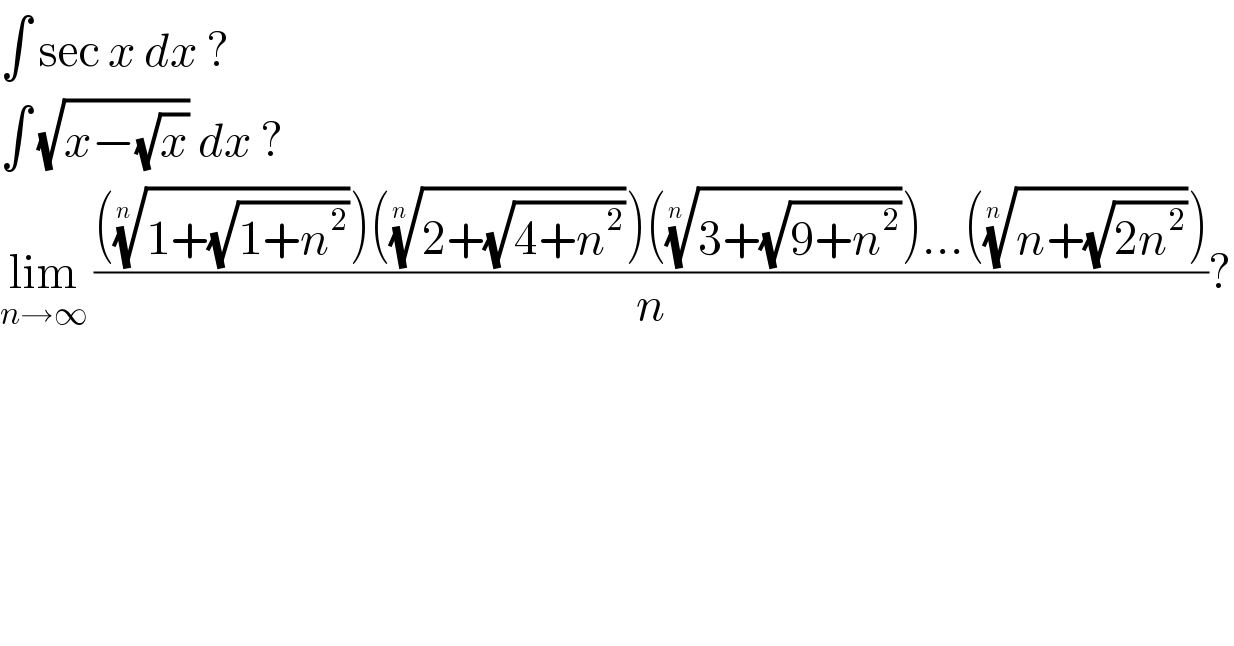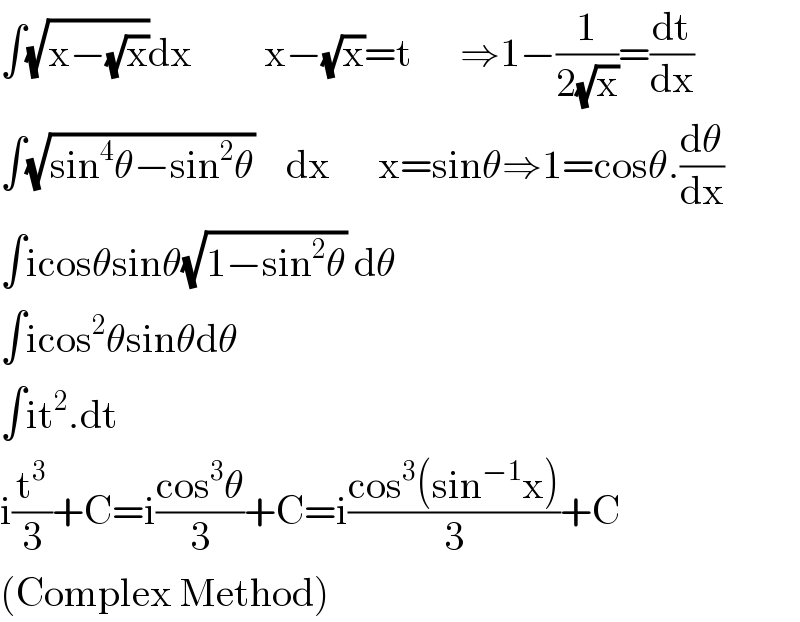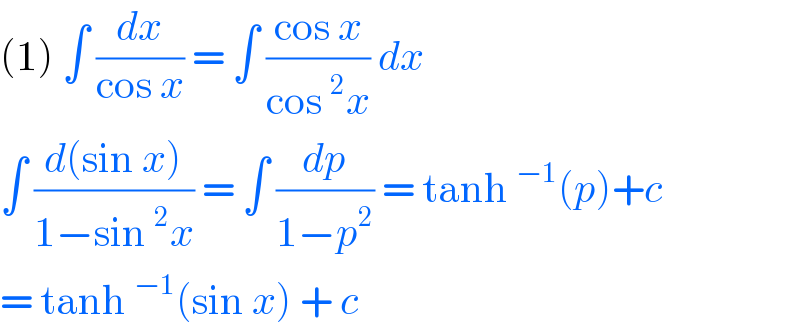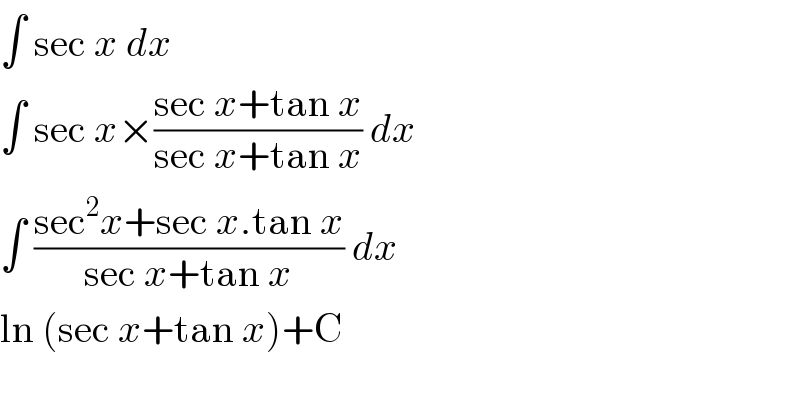
Question and Answers Forum
Question Number 115498 by bobhans last updated on 26/Sep/20

Commented by bobhans last updated on 26/Sep/20

Commented by Dwaipayan Shikari last updated on 26/Sep/20

Answered by bemath last updated on 26/Sep/20

Answered by $@y@m last updated on 26/Sep/20

Answered by TANMAY PANACEA last updated on 26/Sep/20
![lim_(n→∞) (((1+(√(1^2 +n^2 ))))^(1/n) /n^(1/n) )×(((2+(√(2^2 +n^2 ))))^(1/n) /n^(1/n) )×..(((n+(√(n^2 +n^2 ))))^(1/n) /n^(1/n) ) look general term (((r+(√(r^2 +n^2 )))/n))^(1/n) →((r/n)+(√(1+(r^2 /n^2 ))) )^(1/n) i have done error...so correcting now y=lim_(n→∞) Π((r/n)+(√(1+(r^2 /n^2 ))) )^(1/n) lny=lim_(n→∞) (1/n)[ln((1/n)+(√(1+(1^2 /n^2 ))) )+ln((2/n)+(√(1+(2^2 /n^2 ))) )+...ln((n/n)+(√(1+(n^2 /n^2 ))) )] lny=∫_0 ^1 ln(x+(√(1+x^2 )) )dx general term =(((r+(√(r^2 +))))^(1/n) /)](Q115504.png)
Commented by bemath last updated on 26/Sep/20

Answered by Dwaipayan Shikari last updated on 26/Sep/20
![Π_(r=1) ^n ((r/n)+(√((r^2 /n^2 )+1)))^(1/n) =y (1/n)Σ_(r=1) ^n log((r/n)+(√((r^2 /n^2 )+1)))=logy ∫_0 ^1 log(x+(√(x^2 +1)))dx [xlog(x+(√(x^2 +1)))]_0 ^1 −∫_0 ^1 (x/(x+(√(x^2 +1)))).(1+(x/( (√(x^2 +1)))))dx =log((√2)+1)−(1/2)∫_0 ^1 ((2x)/( (√(x^2 +1)))) =log((√2)+1)−[(√(x^2 +1))]_0 ^1 =log((√2)+1)−(√2)+1=logy ⇒y=((√2)+1)e^(1−(√2))](Q115506.png)
Answered by mathmax by abdo last updated on 26/Sep/20
![let U_n =(1/n)(1+(√(1+n^2 )))^(1/n) .((√(2+(√(4+n^2 )))))^(1/n) ......((√(n+(√(n^2 +n^2 )))))^(1/n) ⇒ U_n =(1/n)(Π_(k=1) ^n (k+(√(k^2 +n^2 ))))^(1/n) = =(1/n){Π_(k=1) ^n (k+n(√((k^2 /n^2 )+1)))}^(1/n) =(1/n){n^n Π_(k=1) ^n ((k/n)+(√(1+((k/n))^2 )))}^(1/n) =(Π_(k=1) ^n ((k/n)+(√(1+((k/n))^2 )))^(1/n) ⇒ln(U_n ) =(1/n)Σ_(k=1) ^n ln((k/n)+(√(1+((k/n))^2 ))) ⇒lim_(n→+∞) ln(U_n ) =∫_0 ^1 ln(x+(√(1+x^2 )))dx we have ∫_0 ^1 ln(x+(√(1+x^2 )))dx =[xln(x+(√(1+x^2 )))]_0 ^1 −∫_0 ^1 x.(dx/(√(1+x^2 ))) =ln(1+(√2))−[(√(1+x^2 ))]_0 ^1 =ln(1+(√2))−((√2)−1) ⇒lim_(n→+∞) U_n =e^(ln(1+(√2))+1−(√2)) =(1+(√2))e^(1−(√2)) =S](Q115509.png)
